Because ST Math provides students a different experience, we're sure you want to know what it looks like for them. You've already checked out the gameplay, so let's take a look at the other elements on the student screens.
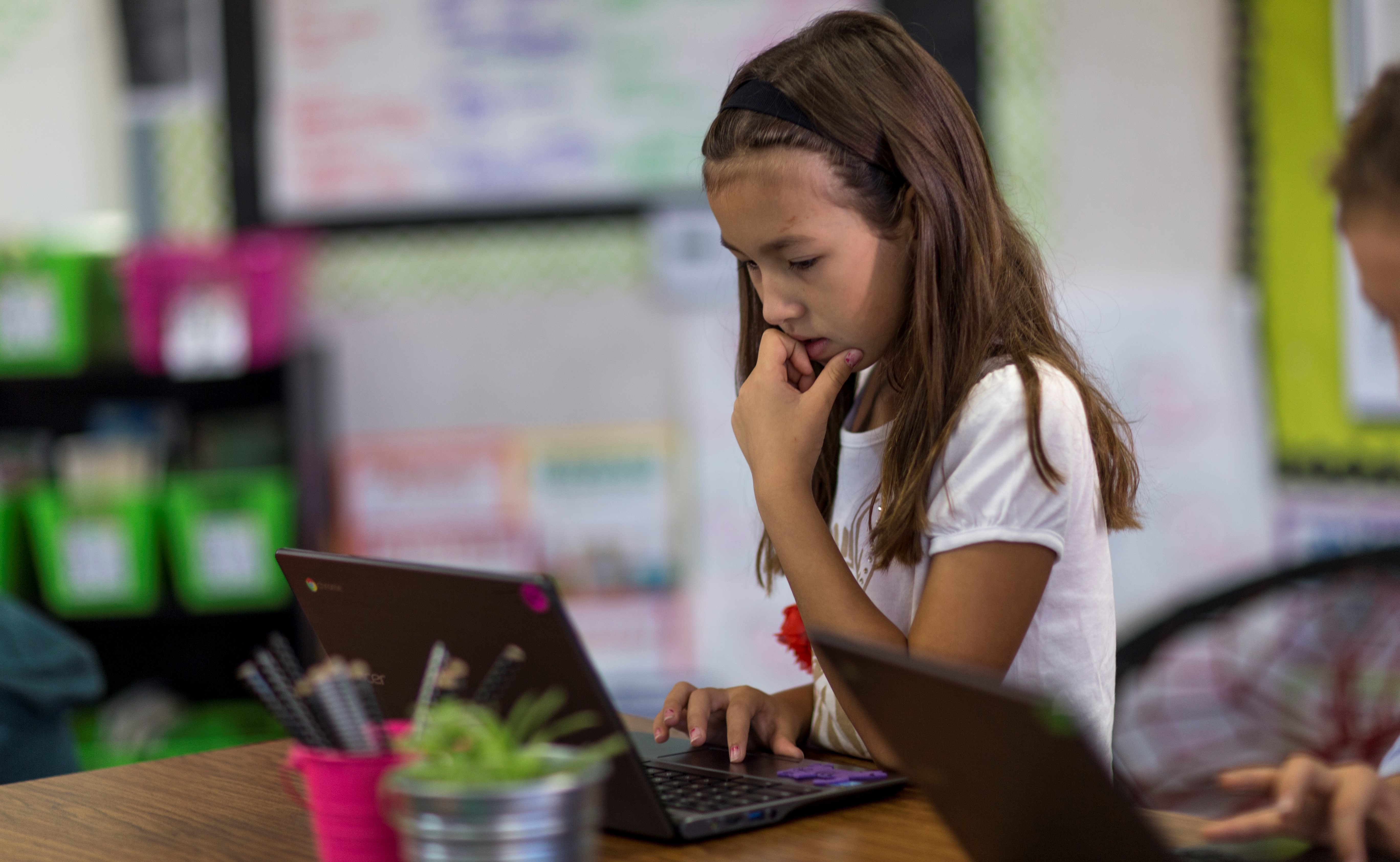
The Landing Page and Journey
When your students sign in to their ST Math account, they arrive on the Landing Page.
The map sends students to their grade level Journey while the house appears as a choice if students have individual or class assignments (learn more in Focus On: Differentiating ST Math).
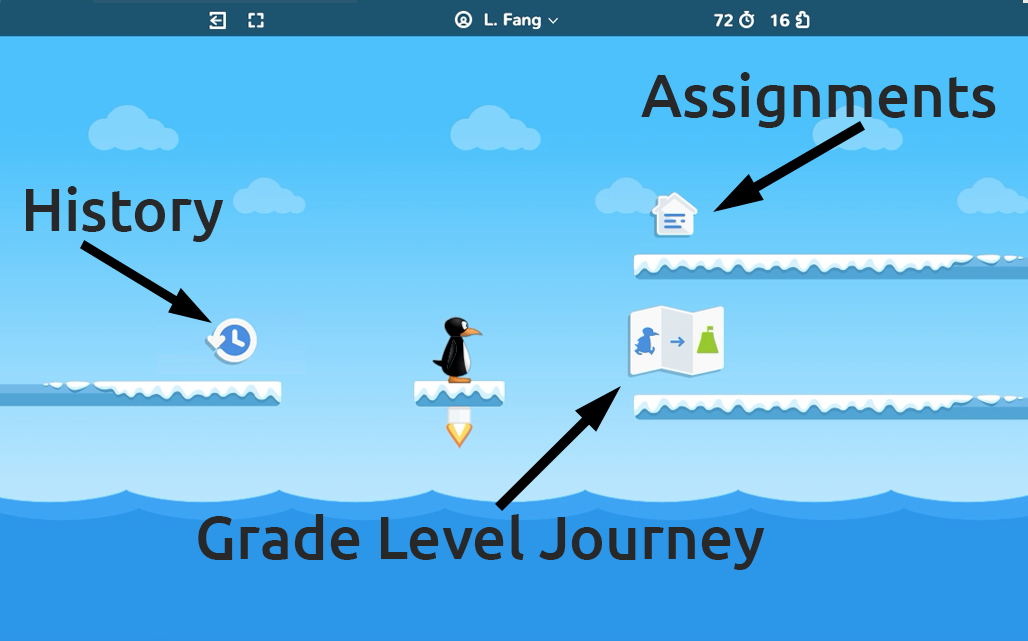
The ST Math content is organized into Objectives which consist of a series of related Games. Each game is organized into Levels that consist of a series of Puzzles. The Objectives in ST Math are presented as one segment of a year-long Journey. Students see an Objective bridge that is divided into sections that show each game and start with a Game pillar. When students complete all the puzzles in a level, a block gets a green check and a new block is added to the bridge.
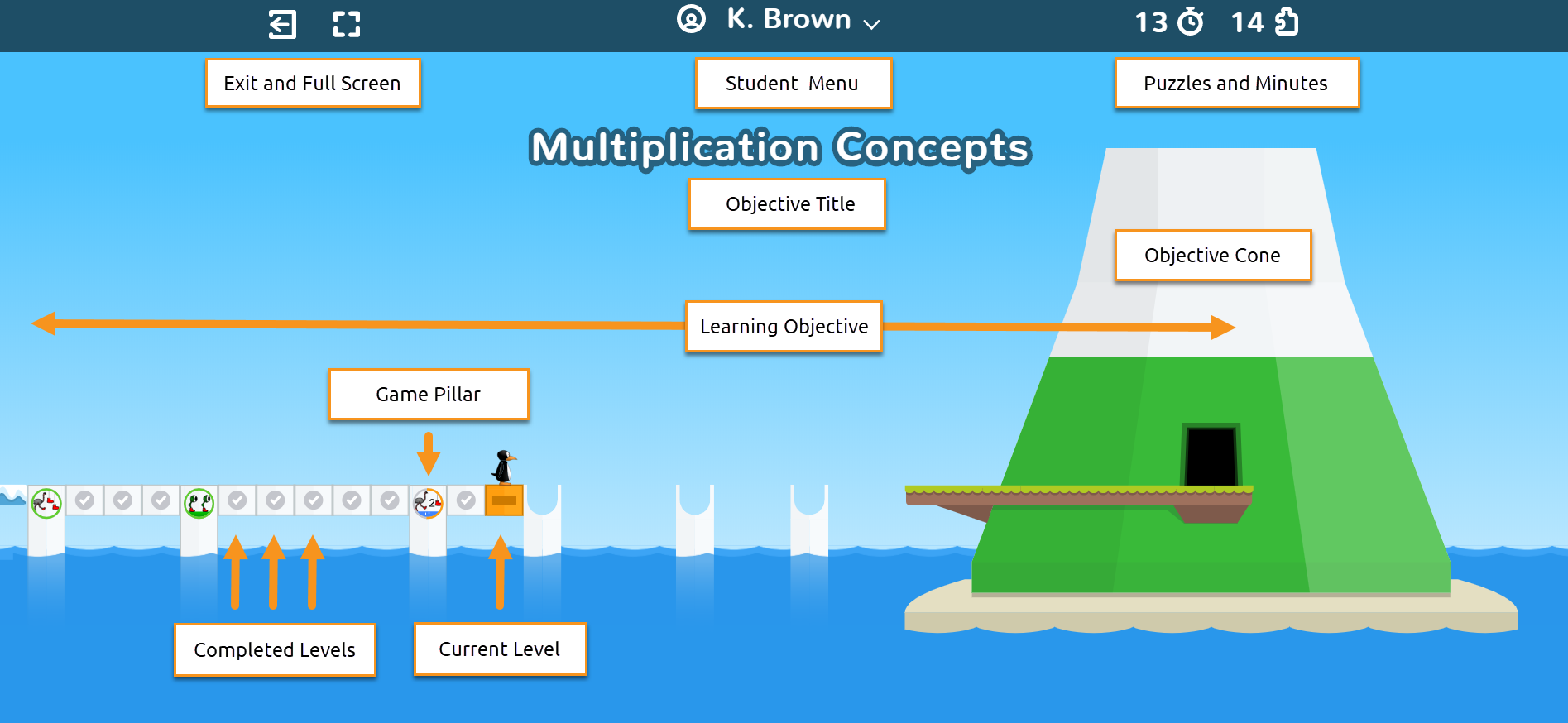
Because ST Math is a mastery-driven learning experience, students must successfully complete every puzzle in a level before moving on. Students usually have two tries before the level restarts. The number of tries a student has on a level is shown in the Toolbar (see below).
Each of the puzzles in a game have a similar theme but you'll notice that the first puzzles in the first level are very simple. Then, as you go on, the levels get more complex as language and symbols are connected to the visual models. When students complete all the levels in a game, they reach the next pillar and start on another game that builds on what they've done but may present the concepts in a different way.
When students reach the Objective Cone, they've completed the Objective and are ready to move on to another math concept. The curriculum is designed so that students will return to important ideas several times as they build a strong mathematics schema.
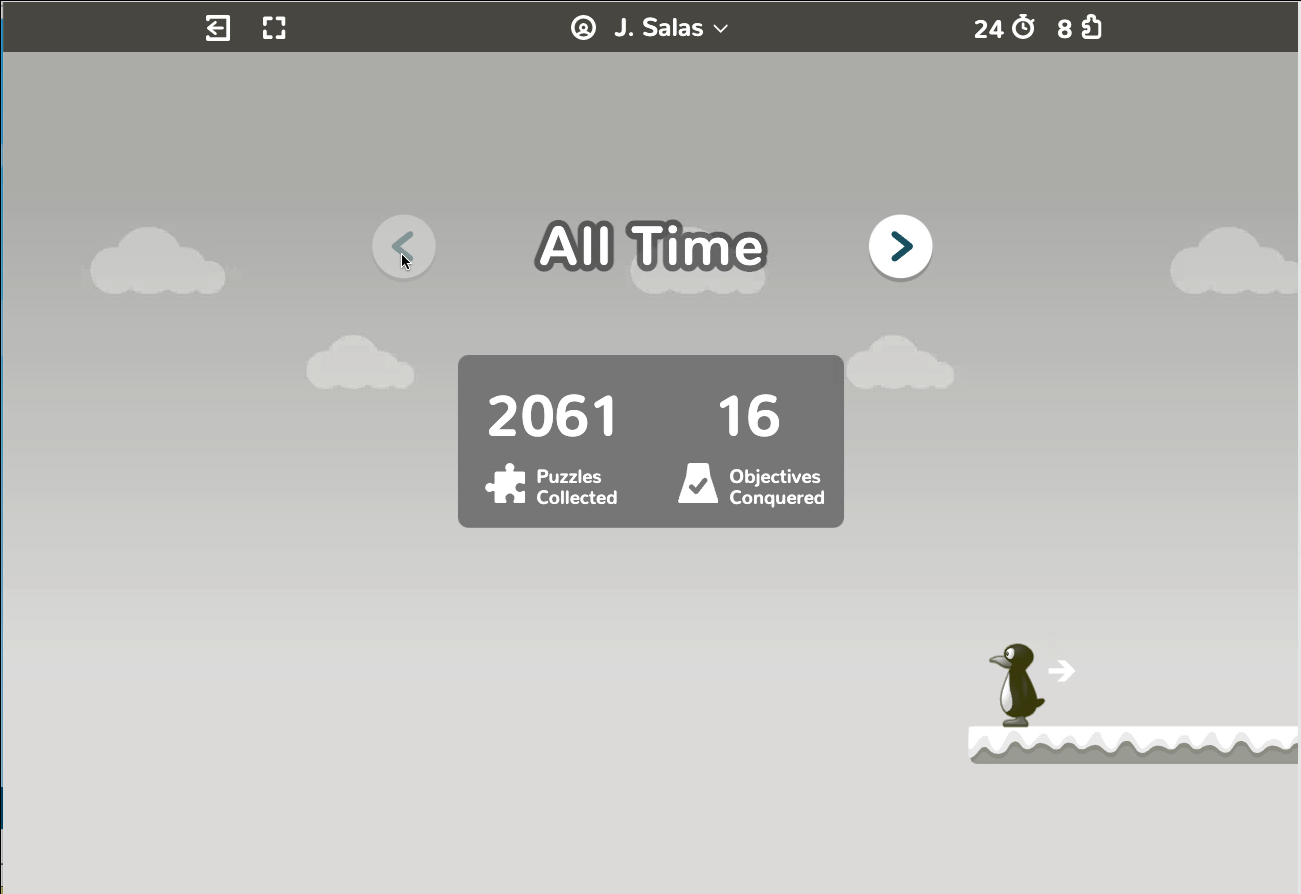
The clock to the left of the screen takes them to their History. That allows students to look at the games they have already completed, see their total number of Puzzles Collected and Objectives Conquered this year, and their ALL TIME totals! If students replay games from their history, the puzzles they complete won't be added to their puzzle count.
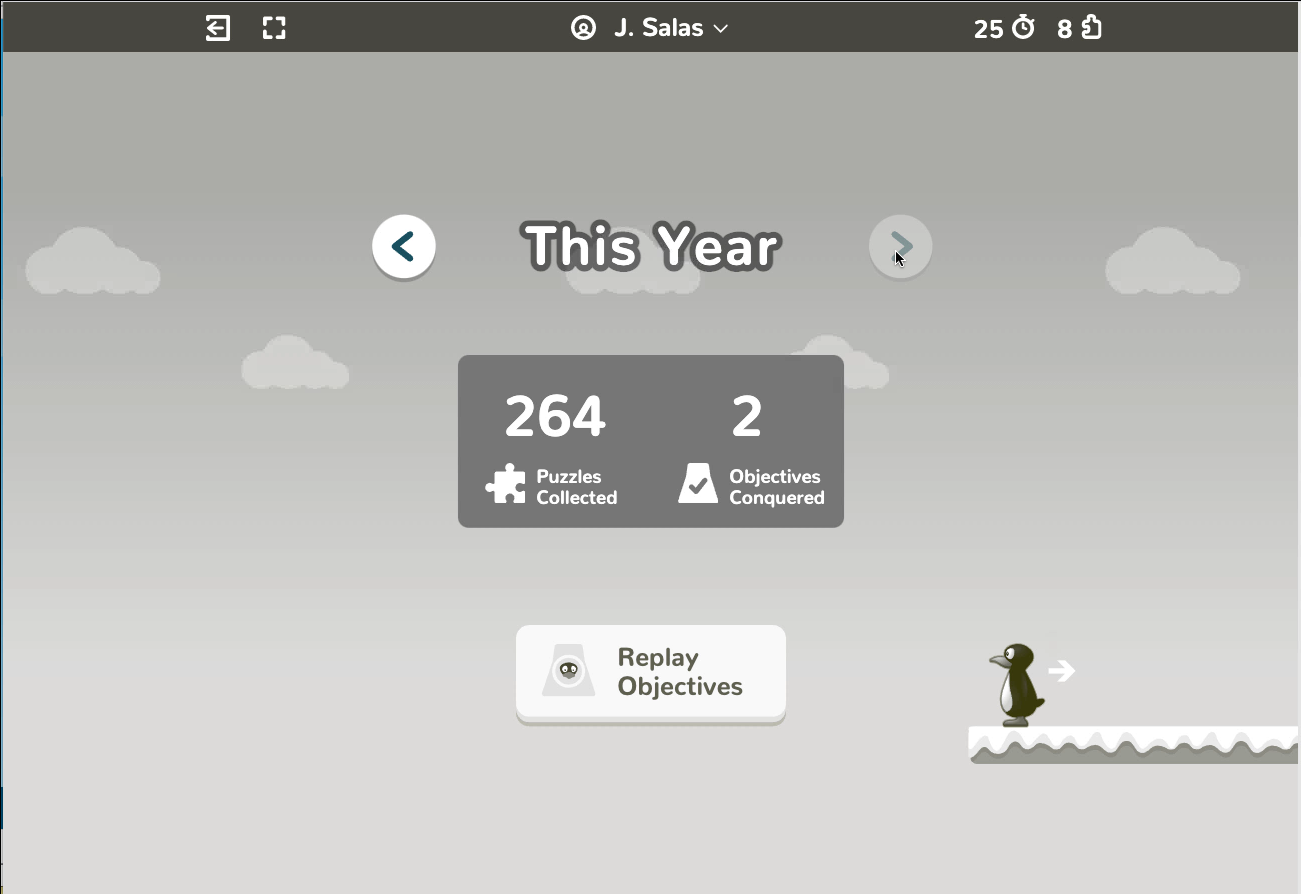
Quizzes
Students in grades 2 and above begin and end each Objective with a quiz. Students may want to use paper and pencil or one of the quiz recording sheets available at ST Math Help.
NOTE: You can choose whether students see the quizzes in English or Spanish by going to your Class Settings tab, and scrolling down to Play Preferences: Manage Quiz Language. There you can choose the quiz language for the whole class or individual students. You can also change the language on any student's Settings page.
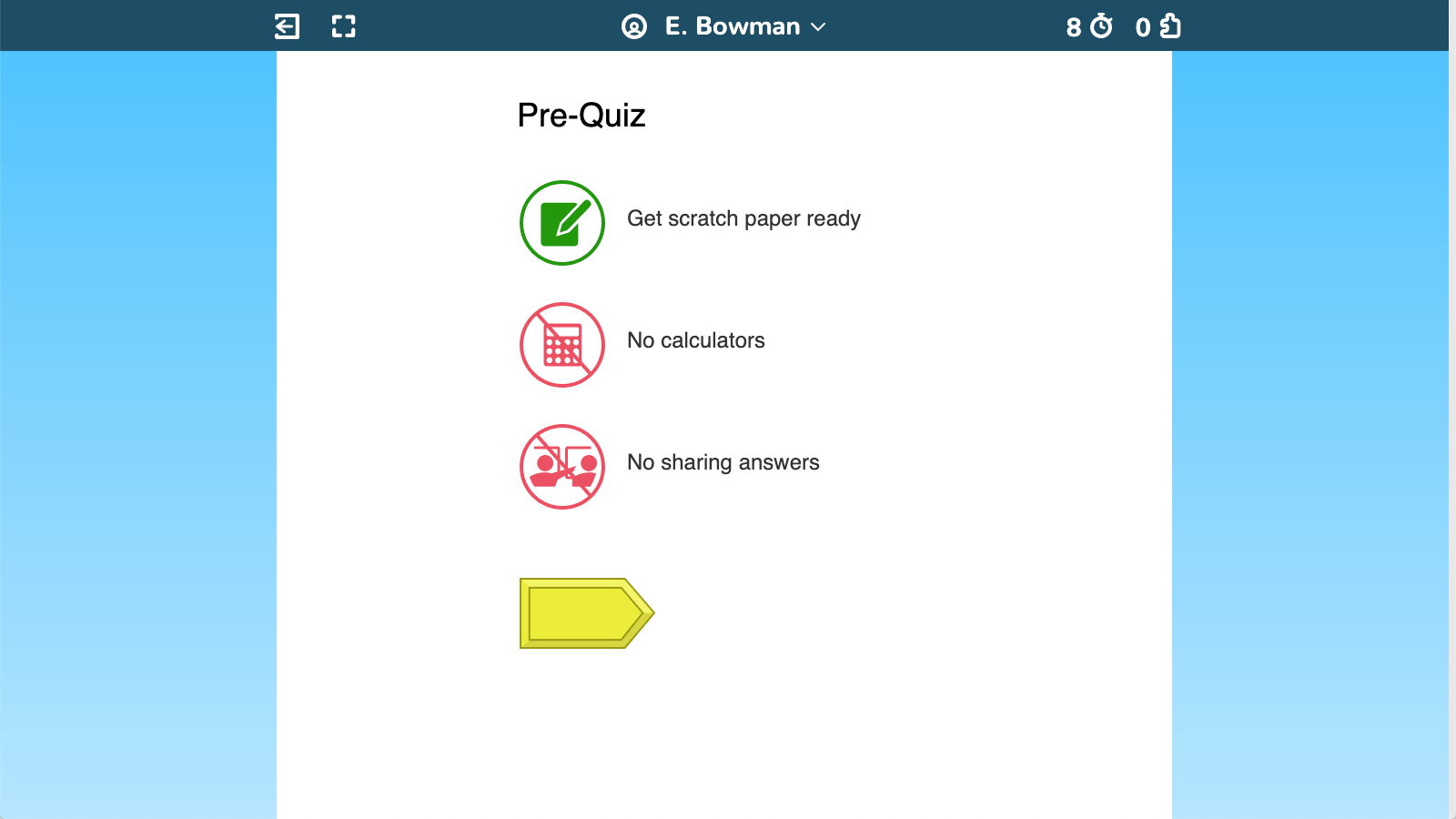
The format of the quiz items is similar to that students will encounter in year-end testing.
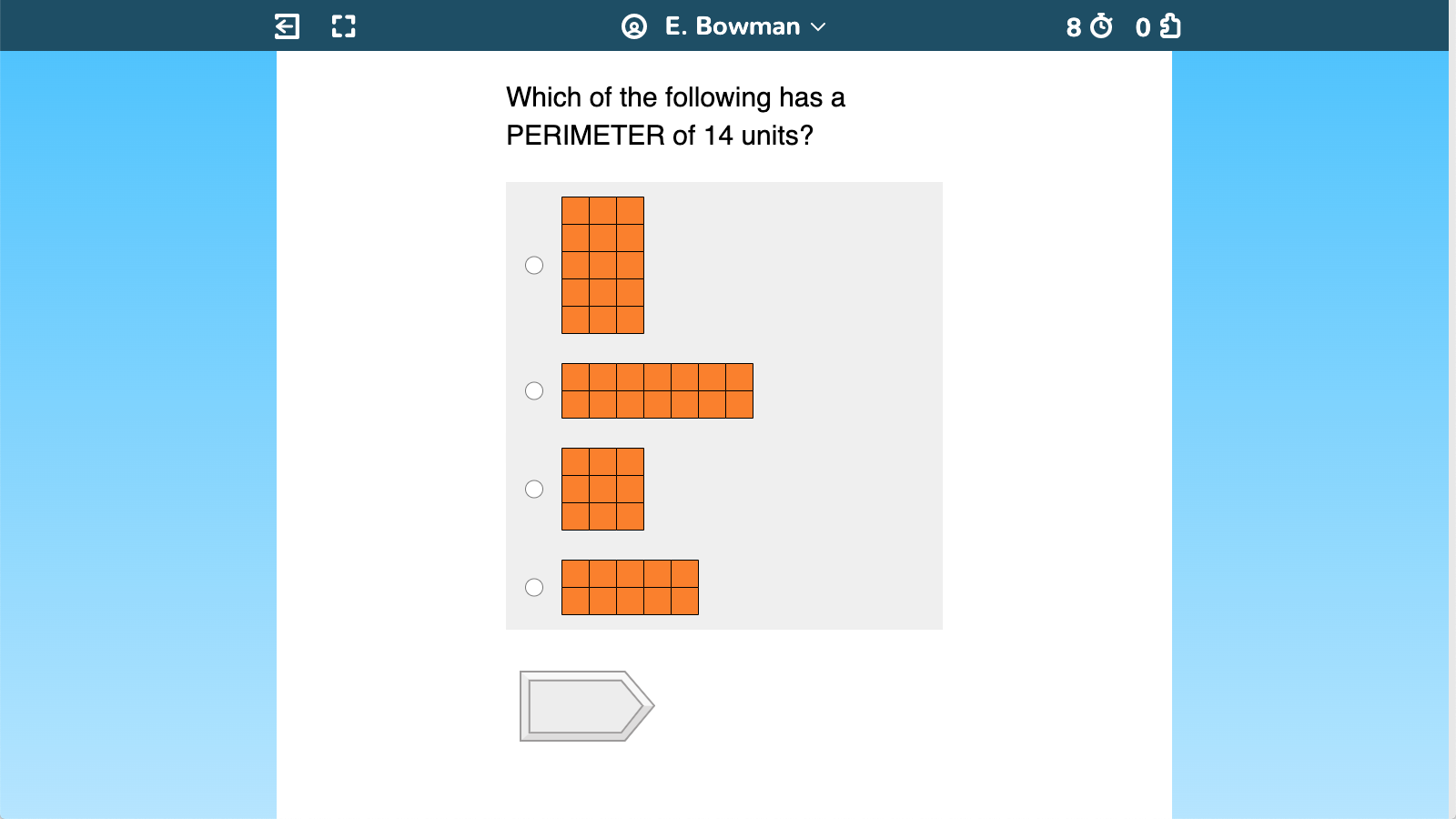
Results are shared immediately with students.
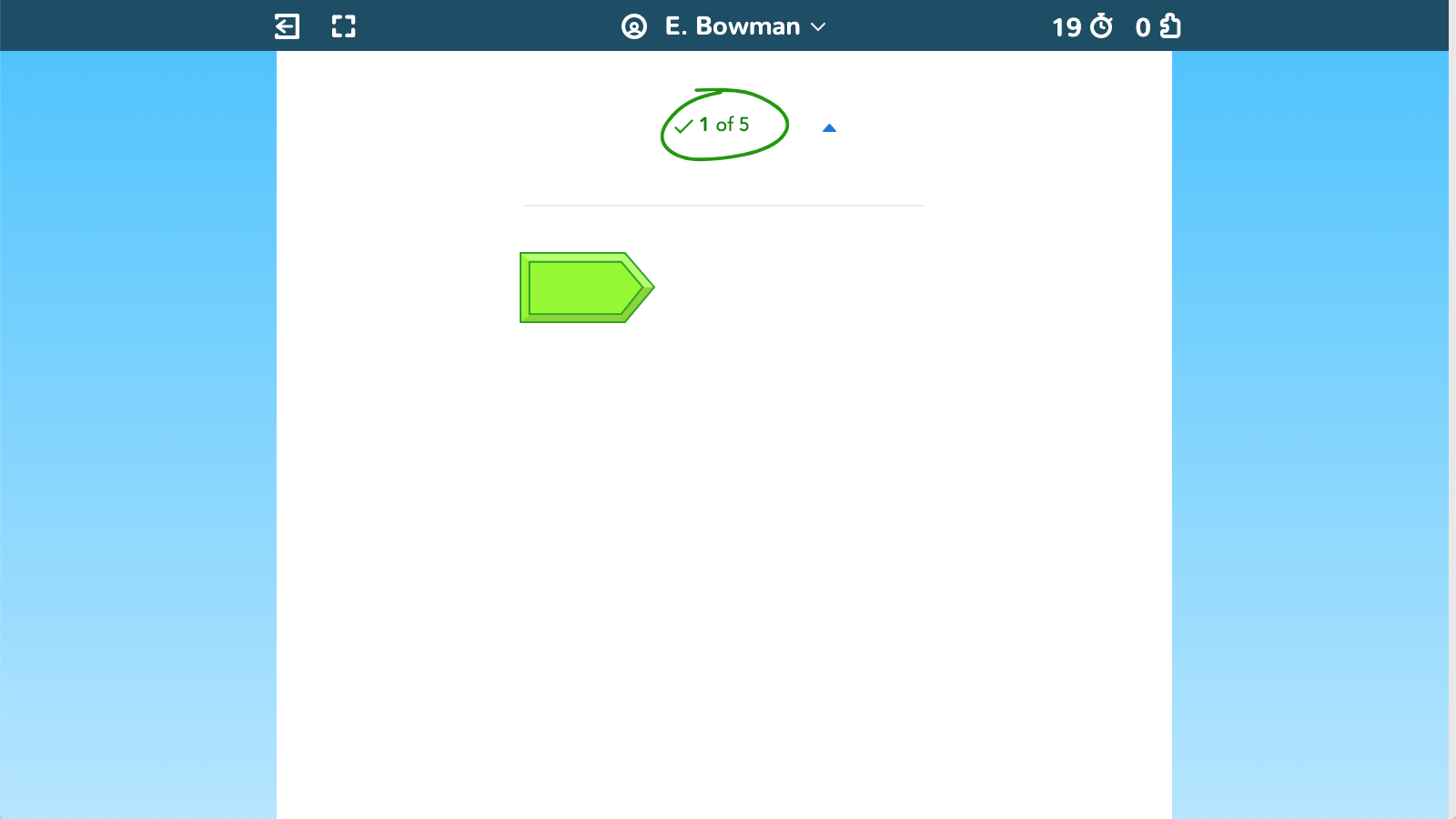
If you click the arrow next to the score on the results page, you and your student will be able to see each of the quiz items and what the student answered. Many teachers ask students to pause on this screen so they can review the quiz together. The more seriously you take the quizzes, the more seriously your students will take them.
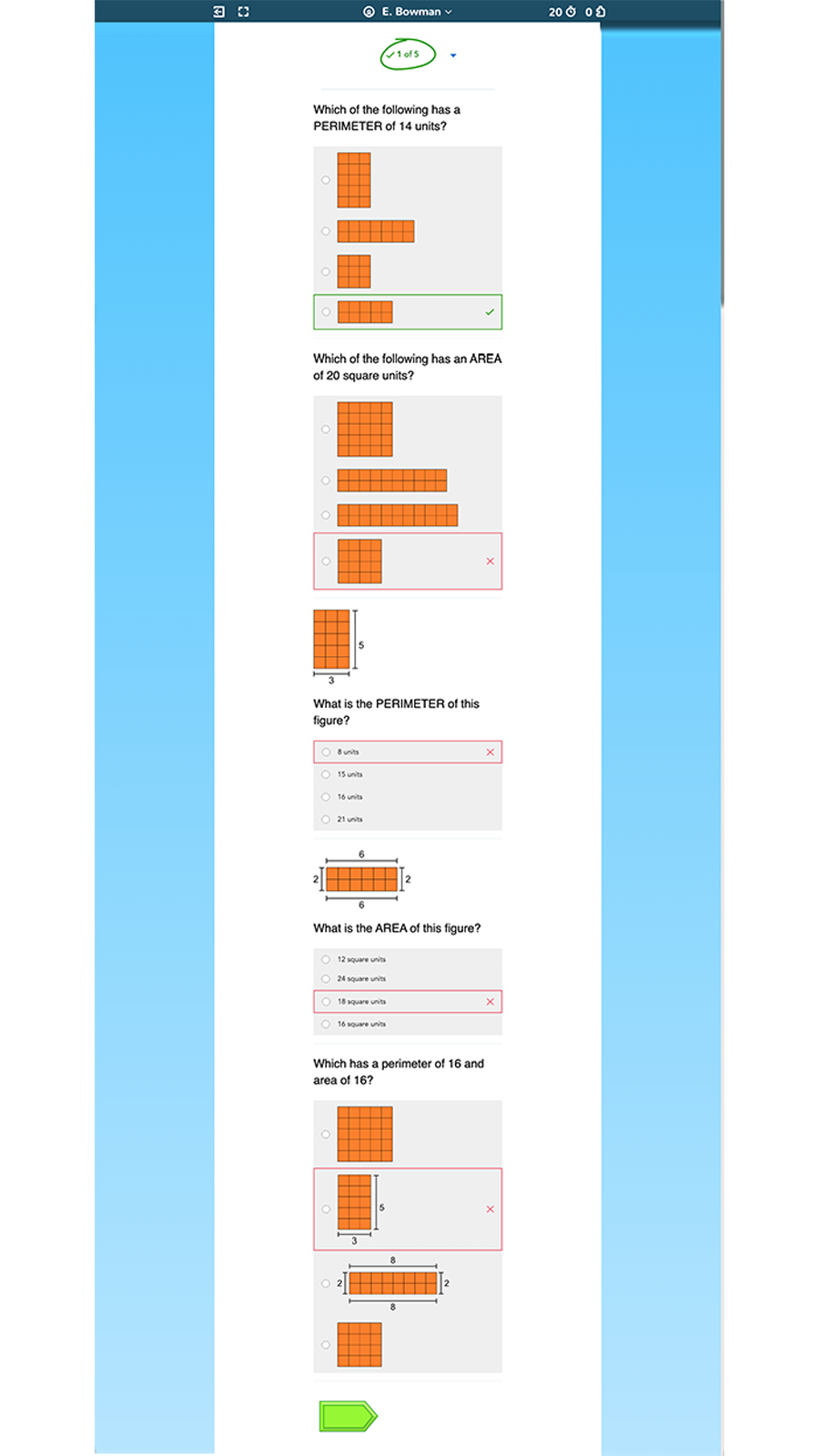
Toolbar Overview
The toolbar packs a lot of information in a little space. The JiJis and dots under the progress bar can tell both of you how it's going but there's so much more!
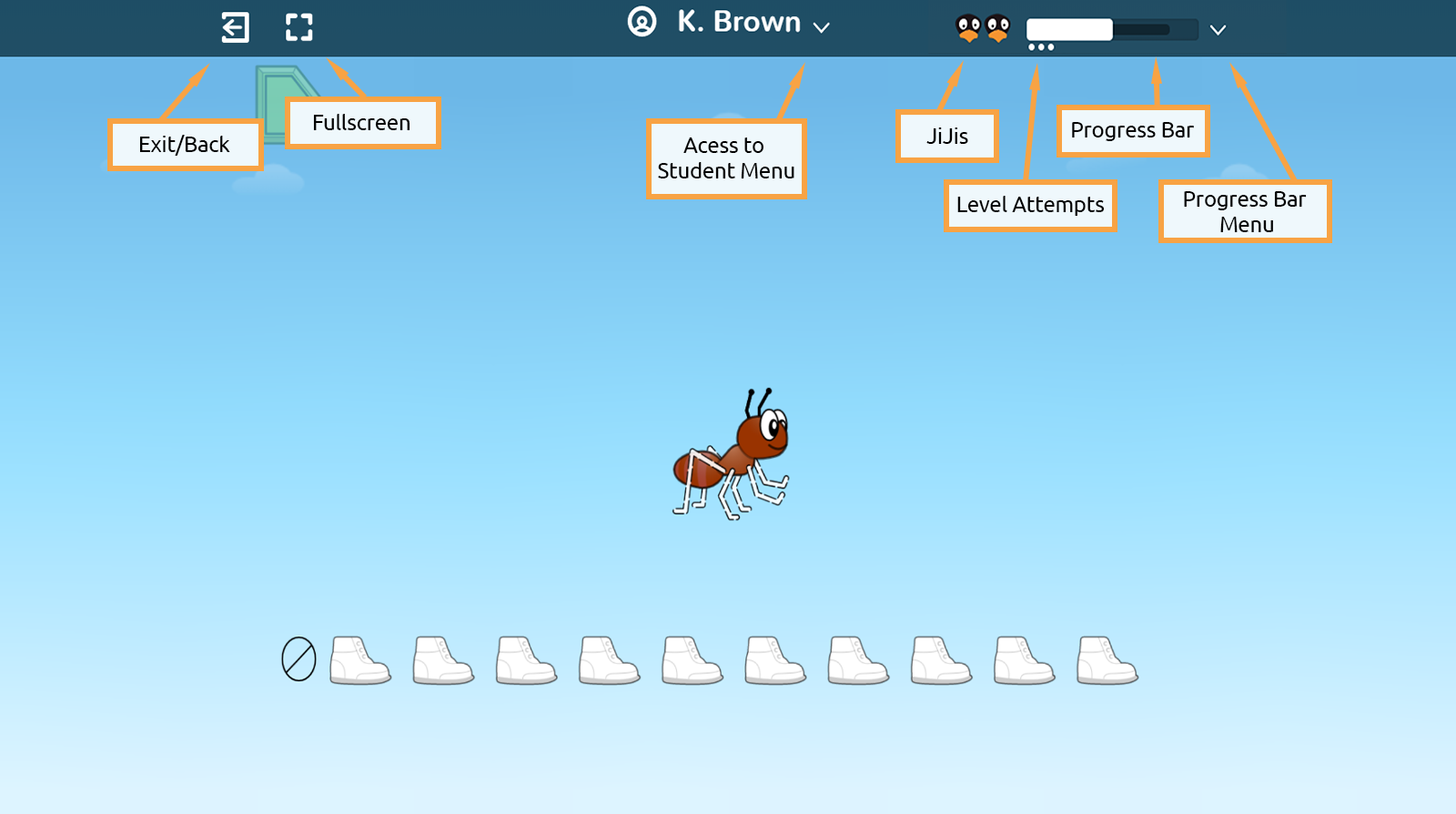
- Students can click the Exit icon to exit a level or ST Math entirely or move back a page.
- The Full Screen icon changes the student’s screen view.
- There are multiple uses for the Student Menu. See the next section to learn more.
- JiJis (or JiJi Tries) are the number of attempts a student has to complete a level and are represented by JiJi faces. In almost all games, a student starts with two JiJis but after two incorrect attempts, the level starts over. When they successfully complete a level, the student's attention is focused for a moment on the progress bar as the completed puzzles fly up as shown below.
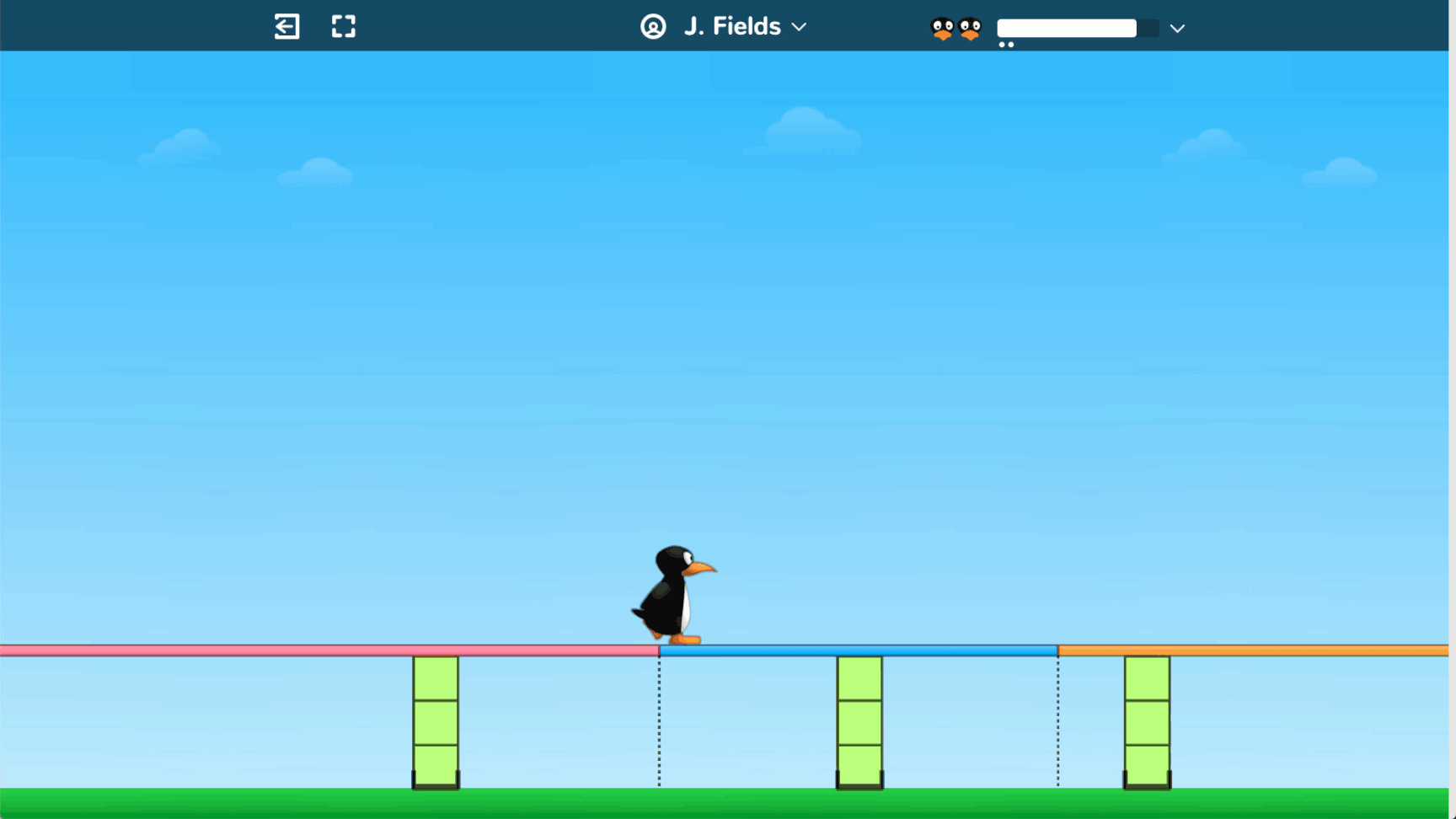
- The Progress Bar shows the students how much of the current level has been completed. The dark bar in the background shows the farthest progress the student has made. The small dots underneath the progress bar indicate the number of times the student has attempted the current level. We suggest that you check in with students who have nine or more dots. Students who have more than 10 unsuccessful tries will have a Many Tries alert on your Students tab. You'll learn more about tries and productive struggle in the Essentials Course 2 module, How and When to Help.

- Note: The toolbar changes when the animation and annotation tools are activated (see below).
Student Menu
Clicking the student's name reveals the Student Menu which has the standard user menu items as well as a toggle in the Settings tab to control Auto Pause.
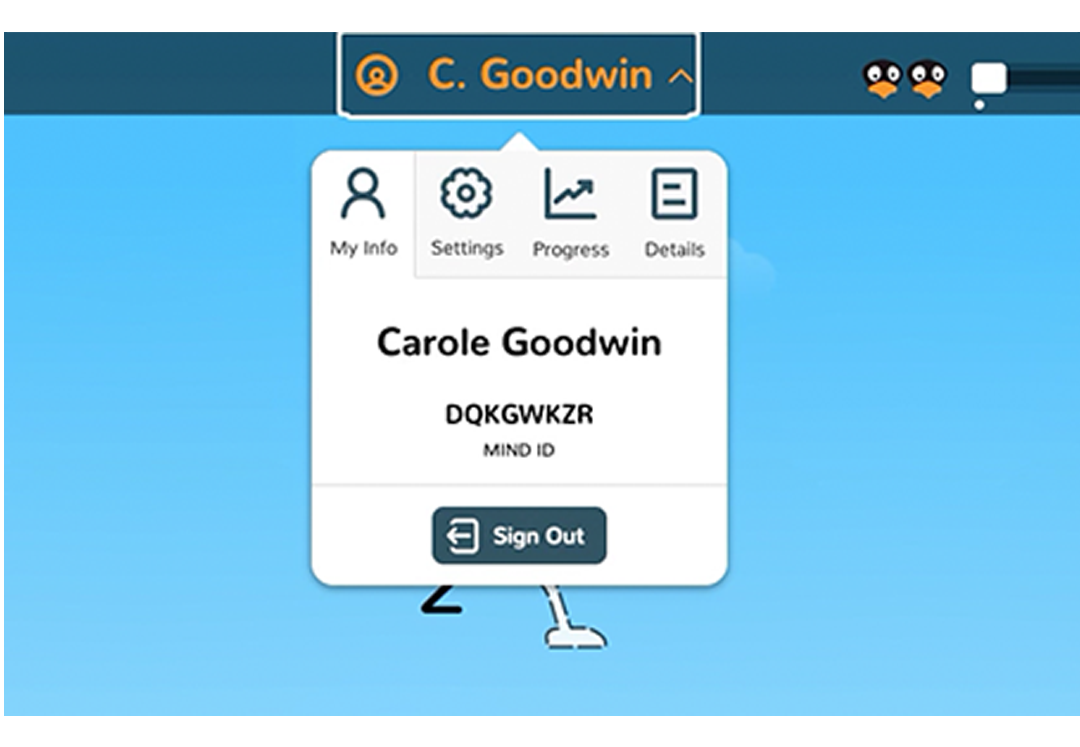
My Info
- Student name
- Student MIND ID
- Sign Out button

Settings
- With Auto Pause on, the animation won't play until the screen or play button is clicked.
- With Auto Pause off, the animation plays immediately after the Go button is clicked or the final answer is entered. Students have to double-click the screen to pause the animation and reveal the animation controls.
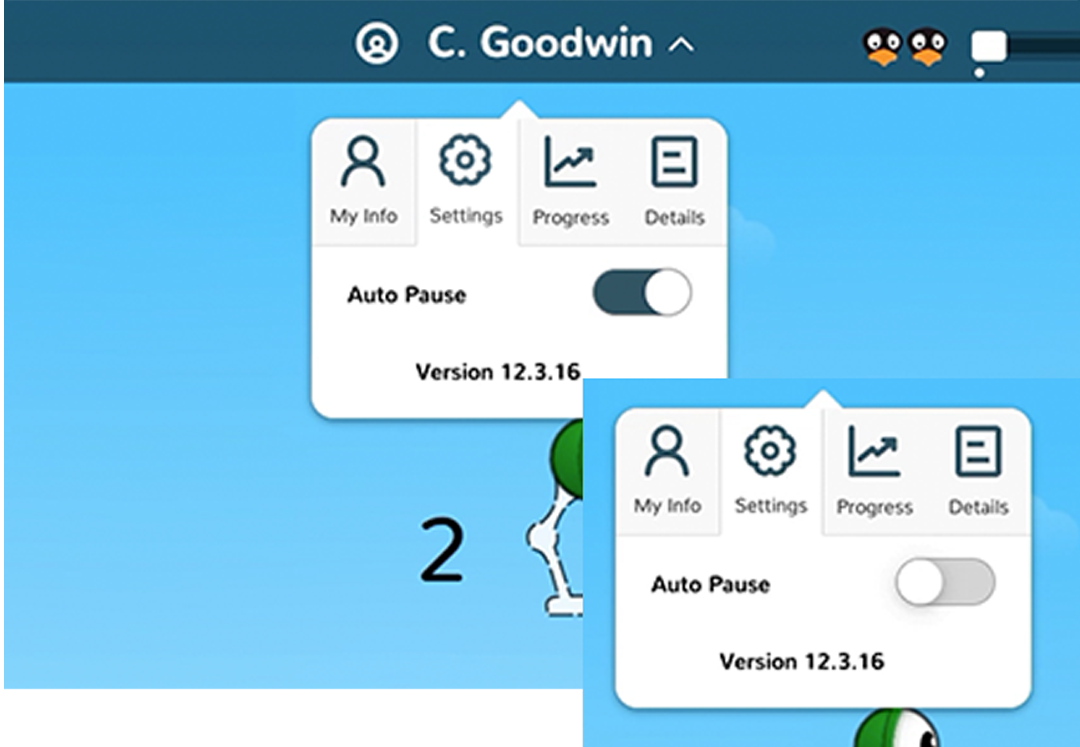
Progress
- Students can see what days they logged in and their Minutes and Puzzles for this week and last week as well as their average Minutes and Puzzles. The values reset for the week on Sunday night.
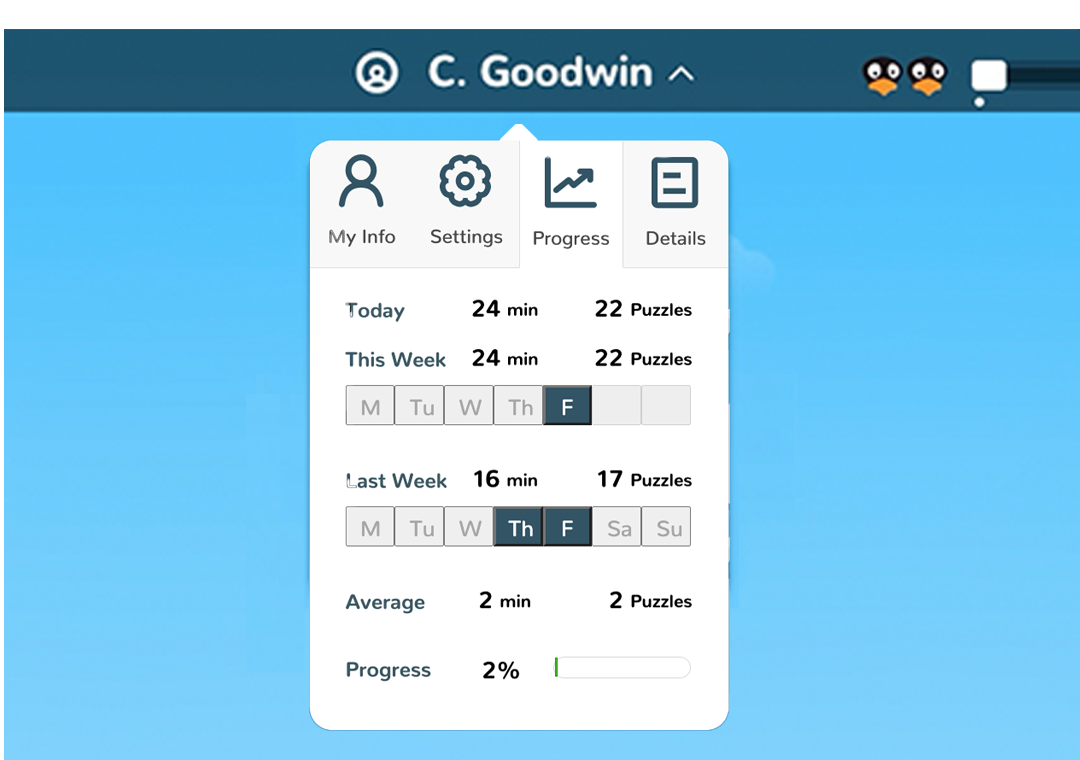
Details shows the following information:
- Student ID
- School
- Grade
- Teacher
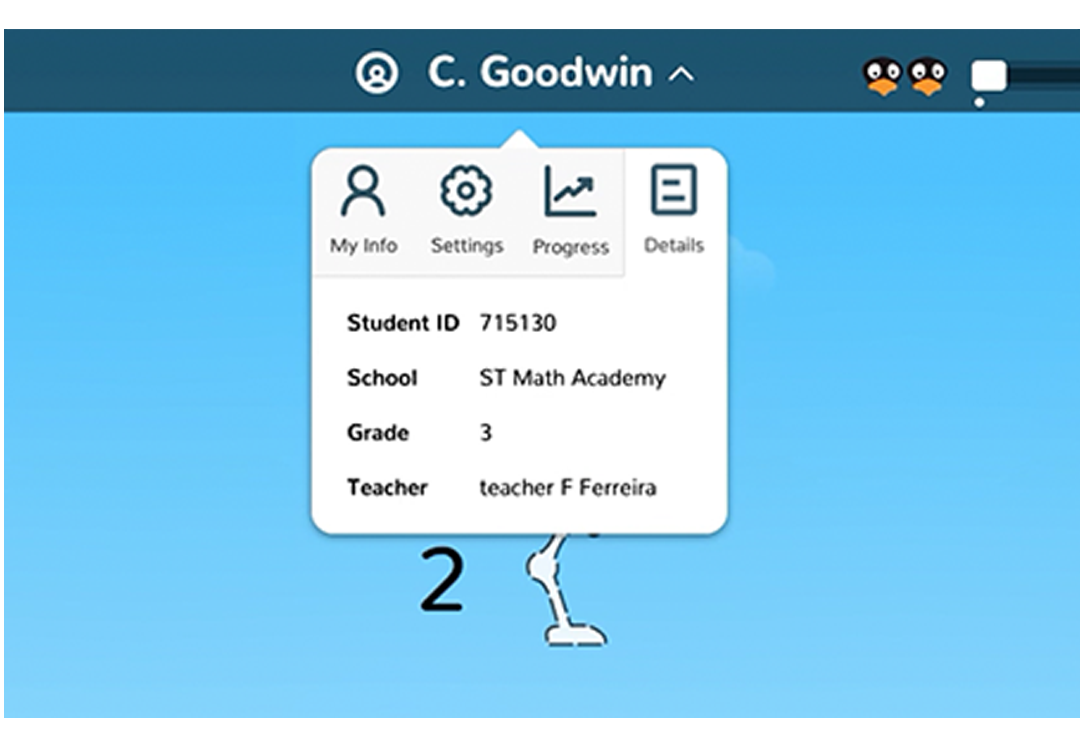
Pausing the Animation
Pausing the animation is a powerful tool that allows teachers and students to examine the visual proofs that happen after the green Go button is clicked (or the answer is entered).
To show the animation controls, either:
- Double click on the screen after clicking the Go button OR
- Turn on Auto Pause in the Settings tab of the Student Menu
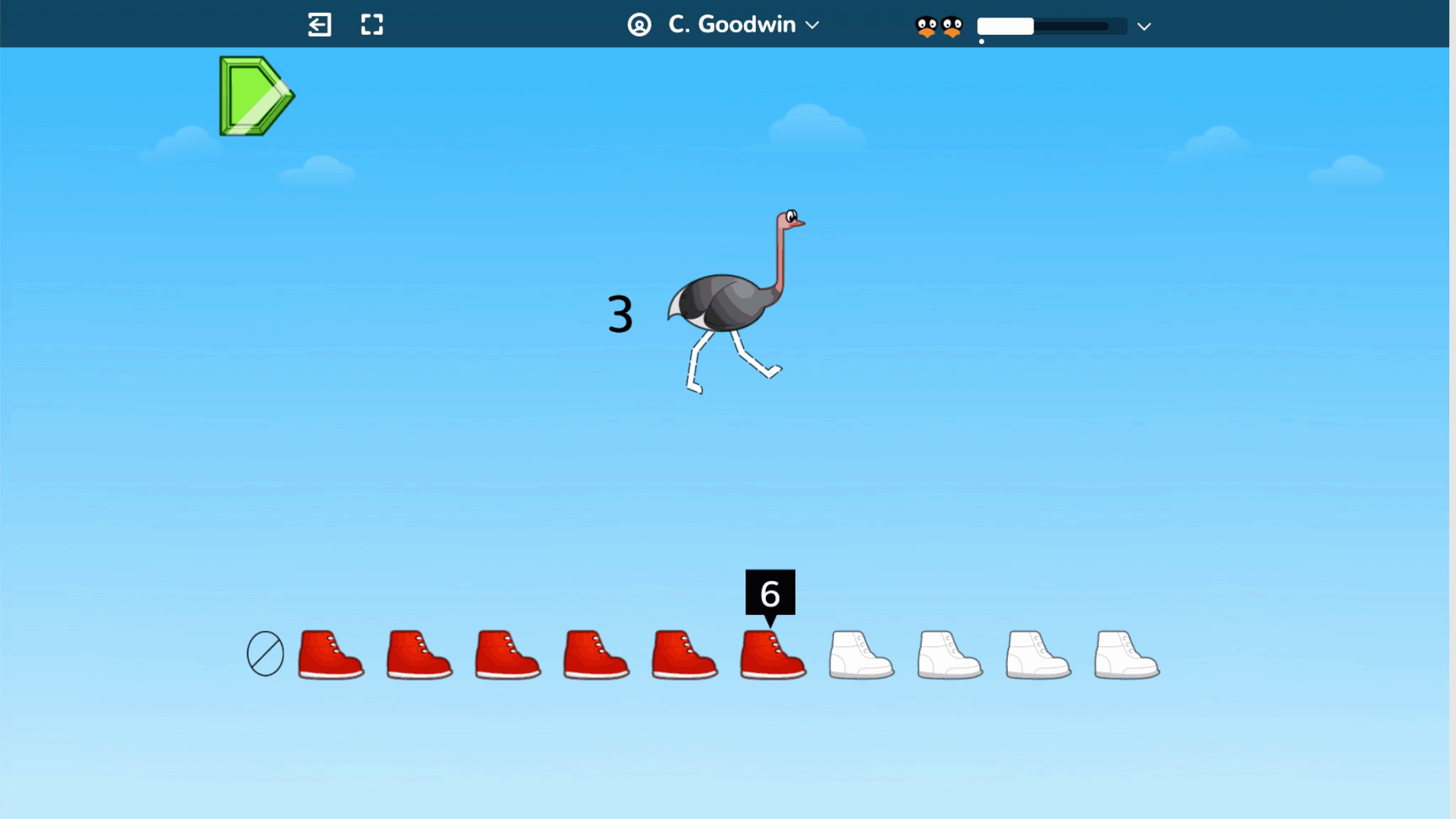
The importance of the feedback was explored during the previous module and is vital to the power of ST Math but sometimes the animation may go too fast or you may want to talk about what's happening on the screen with the student. That's when pausing the animation is really handy.
The best thing to do is make sure students know how to use the feature and encourage them to pause the animation when they're trying to figure out a puzzle.
Using the Annotation Tool
The annotation tool allows students to write on the screen to show their thinking or record their answer. Once the animation controls are activated (double click during the animation or turn on Auto Pause), click the pen to start annotating. To turn off, click the pen icon in the tool bar or the play button.
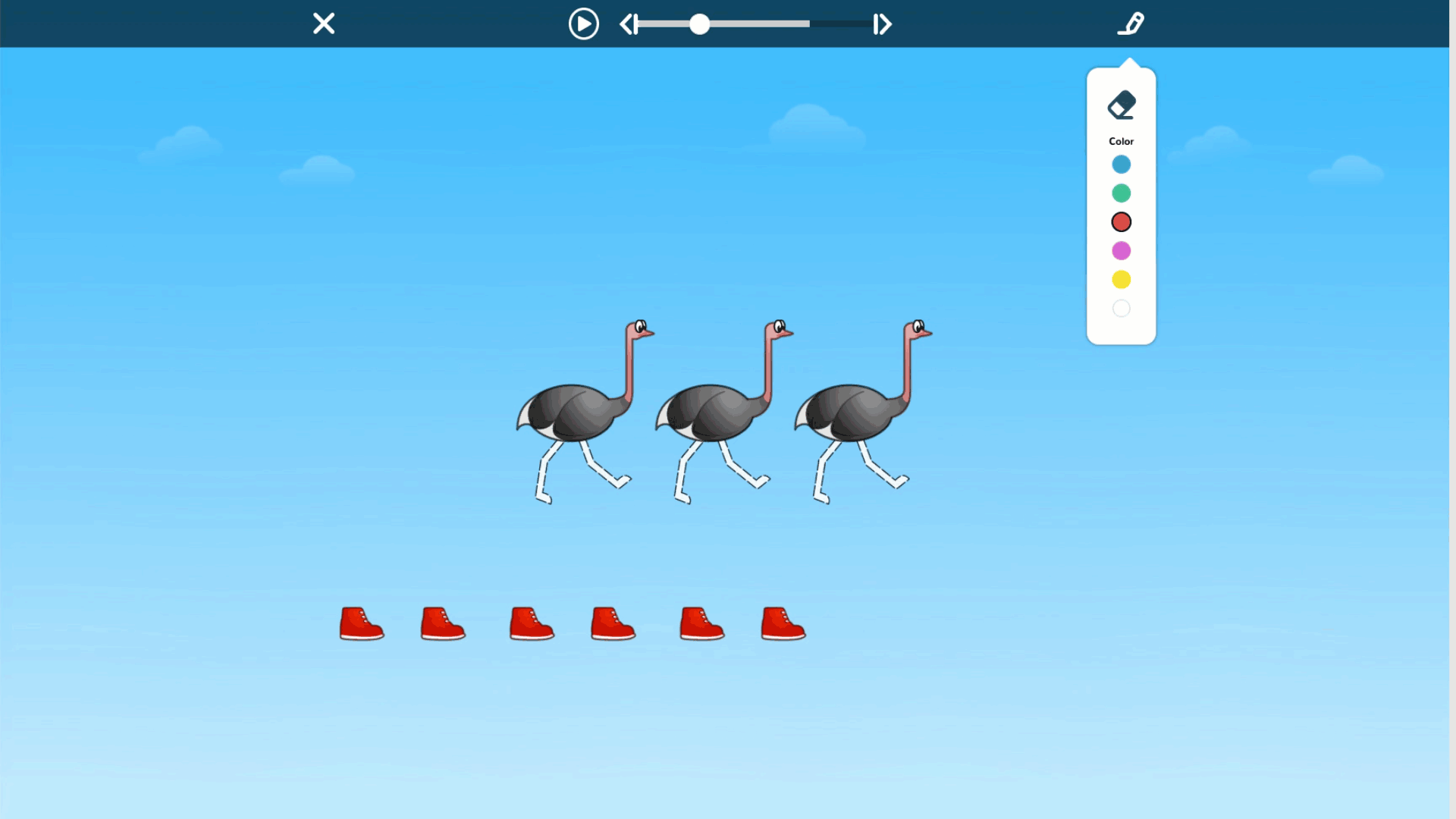
What's Next
The Essentials Course 1 > Getting Ready > Getting the Best Results
